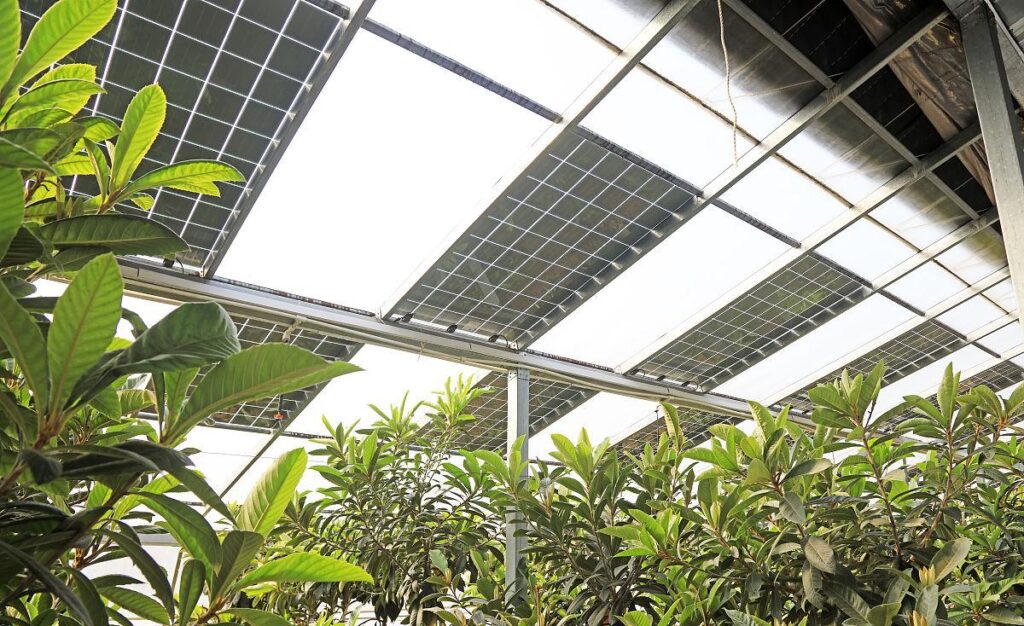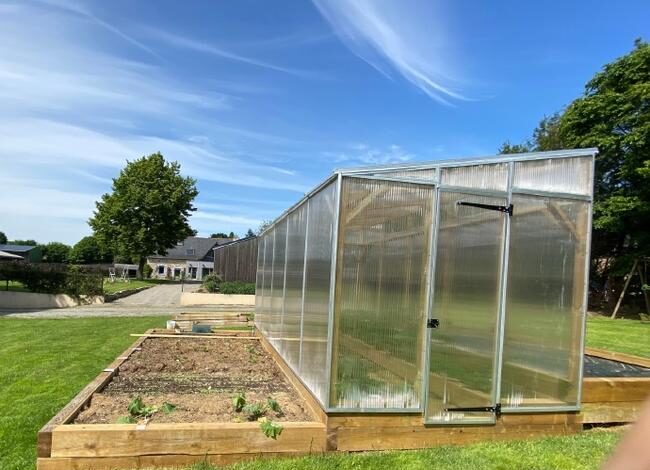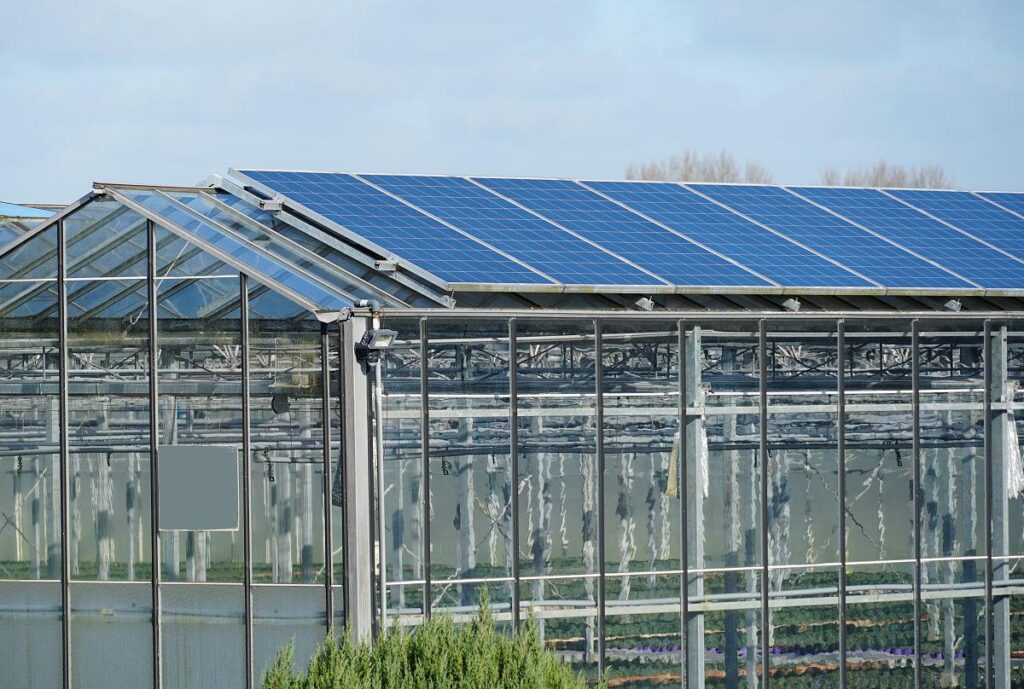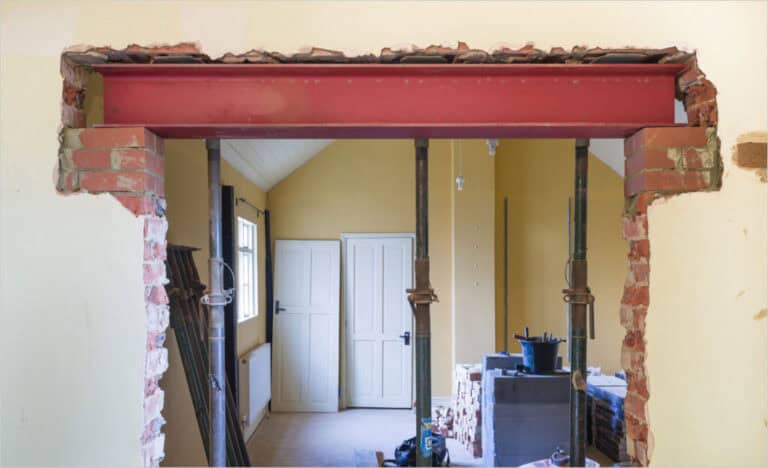Picture this: snow outside, but your greenhouse is warm, quiet, and bursting with fresh greens—powered entirely by the sun. No grid, no gas, no noise. Just design, light, and smart thinking.
If that sounds like a fantasy, it’s not. Over the years, we’ve worked with growers, homesteaders, and backyard dreamers to help turn sunlight into self-sustaining food systems. And we’ve seen one thing over and over again: success doesn’t come from big budgets or high-tech gadgets. It comes from understanding how to match your site, structure, and systems to the power of the sun.
This guide will show you exactly how to do that—step by step. Whether you’re just sketching ideas or getting ready to build, you’ll find answers here that save you time, money, and a whole lot of trial and error.
Let’s build a greenhouse that works with nature, not against it.
What to Expect in This Blog:
What Is a Solar-Powered Greenhouse?
A solar-powered greenhouse uses sunlight as its main energy source—for heat, light, and sometimes electricity. But not all solar greenhouses work the same way. Before you start building, it’s important to understand two key approaches: passive solar design and active solar systems.
Passive solar means using smart design to collect and store the sun’s heat during the day, then release it at night. This doesn’t require solar panels. You can achieve it with proper orientation, glazing, insulation, and thermal mass like water barrels or concrete floors.
Active solar refers to using solar panels (PV systems) to generate electricity. This electricity can power fans, pumps, lights, or even heaters. Some greenhouses also use solar water heaters to keep temperatures stable.

So when we say “solar-powered,” we could be talking about:
- A structure that captures and holds heat naturally;
- A greenhouse with solar panels to power equipment;
- Or a hybrid of both.
If your goal is energy efficiency, the best solution often combines both passive and active methods. You don’t always need a big solar panel system. In fact, using the sun’s heat directly is usually more efficient than converting it into electricity first.
Understanding these basics will help you design a greenhouse that fits your climate, your goals, and your budget. Ready to see if your site gets enough sun? Let’s move on.
Further Reading:
What is a Solar Greenhouse? Do You Really Know?
Does My Site Have the Right Sunlight and Space?
You might be wondering: Can I really build a solar greenhouse in my backyard or field? The answer depends on two main things—sunlight and space.
How Much Sun Is Enough?
For a solar-powered greenhouse, sunlight is your main fuel. That’s why location matters. Ideally, your site should get at least 6 hours of direct sun per day, especially in winter.
The best orientation is south-facing (or southeast, depending on your latitude). This allows the greenhouse to capture the most light during the day, especially when the sun is lower in the sky.
Quick Test:
Go outside on a sunny winter day and stand where you plan to build. Is it bright from morning to mid-afternoon? If you see long shadows from trees, fences, or buildings, that could be a problem. Even partial shading can reduce heat gain and plant growth.
If your greenhouse site doesn’t get consistent sunlight, you might want to:
- Trim or remove nearby shade sources (if possible);
- Use reflective surfaces or light-colored walls to bounce more light in;
- Consider placing your solar panels in a better spot, like your house roof, even if the greenhouse is nearby.
Do I Have Enough Space?
The size you need depends on what you plan to grow. But even a small solar greenhouse needs room to breathe.
Here are a few things to consider:
- Orientation Space: You’ll need to position the long side of the greenhouse to face the sun.
- Clearance: Make sure there’s enough space around it for ventilation, maintenance access, and avoiding shade.
- Structure Footprint: Don’t forget to include walkways and workspace, not just growing beds.
- Solar Panel Placement: If you want rooftop panels, make sure the roof angle and direction are suitable. If you’re considering ground-mounted panels, plan for extra space nearby.
A sunny, open, and south-facing spot is your best foundation. If you’re unsure, take photos of the site throughout the day or use a sun-mapping app to track shadows. This small step can save you a lot of trouble later on.
Ready to choose your structure? Let’s take a closer look.
What Kind of Structure Should I Build?
Once you’ve found the right location, it’s time to think about structure. And no—it’s not just about picking a shape. The type of greenhouse you build affects how well it captures heat, holds up over time, and supports solar components.

Attached or Freestanding?
First, decide whether your greenhouse will connect to an existing building or stand on its own.
An attached greenhouse shares a wall with your house, garage, or barn. This can help with insulation, save on construction costs, and make power or water access easier. But you’ll need to make sure that wall faces the sun and that it doesn’t block too much light.
A freestanding greenhouse stands alone. It gives you more freedom with orientation and light exposure. If you want to build something larger or more self-sufficient, this is often the better choice.
Ask yourself:
“Do I already have a south-facing wall to work with?”
“Am I looking for something small and convenient, or scalable and independent?”
What About Frame Materials?
Your frame affects strength, insulation, durability, and whether you can mount solar panels.
Here’s a quick comparison of common materials:
| Material | Pros | Cons |
| Wood | Natural, affordable, easy to work with | Needs maintenance, can warp or rot |
| Aluminum | Lightweight, rust-resistant | Less sturdy, not ideal for PV loads |
| Steel | Strong, long-lasting, supports PV well | Heavier, higher upfront cost |
If you plan to install solar panels on the roof—or in high-wind or snow-load areas—steel framing is often the safest and most reliable choice. It can support more weight and lasts much longer than wood in harsh conditions.
And if you’re working with a solar installer or engineer, they’ll likely prefer a structure that can handle the load without extra reinforcements.
Choosing the right structure is about more than just aesthetics. It’s about efficiency, safety, and long-term performance—especially when solar power is involved.
Next, we’ll dive into how your greenhouse actually stays warm without needing to plug in.
How Do I Maintain Temperature Without Grid Power?
You don’t need electric heaters to keep your greenhouse warm. In fact, heating with electricity is often the least efficient way to use solar energy. The smarter approach is to use the heat you already have—and keep it from escaping.
“Can I trap the sun’s heat during the day and use it at night?”
Yes. That’s the whole idea behind passive solar design. It starts with how you build.
When your greenhouse faces the sun, with the right glazing and insulation, it naturally heats up during the day. The trick is storing that heat. This is where thermal mass comes in.
Thermal mass refers to dense materials that absorb heat slowly and release it gradually—like water barrels, concrete, stone, or even packed soil. Placed inside your greenhouse, they soak up sunlight during the day and help stabilize temperatures when the sun goes down.
Some greenhouse builders go a step further with systems like GAHT® (Ground to Air Heat Transfer), which moves warm air underground during the day and recirculates it at night. It’s more advanced, but the idea is the same: store heat now, use it later.
“What about summer—will it overheat?”
Good question. A solar greenhouse can get hot fast if there’s no airflow. That’s why ventilation is just as important as insulation.
Vents at the roof and base of the structure allow warm air to escape and cool air to enter. Some people add solar-powered fans for active airflow, but even a well-designed passive system can handle most of the work—especially if vents are placed strategically.
You should also avoid over-insulating. In cold climates, you want to trap heat. But in warm regions, too much insulation can actually work against you by holding in excess heat.
So, can you keep your greenhouse warm in winter and cool in summer—without plugging it in?
Yes, you can. All it takes is smart design, thermal mass, and good ventilation.
Now that you understand how to control temperature without the grid, let’s talk about what solar panels can (and can’t) do for your greenhouse.
Do I Need Solar Panels – And How Many?
When people hear “solar-powered greenhouse,” they often picture a roof full of solar panels. But here’s the truth: you don’t always need a big solar setup—and in many cases, you may not need panels at all.

Start With This Question: What Are You Powering?
Solar panels generate electricity, not heat. So ask yourself: What exactly do I need electricity for in my greenhouse?
Here are a few common items:
- Exhaust or circulation fans
- LED grow lights (usually for winter or cloudy regions)
- Water pumps or aerators (especially in aquaponics)
- Small heating pads or sensors
If you’re only running a fan or two, a small solar kit with a battery might be all you need. In some cases, you can even run direct current (DC) devices without an inverter—cheaper and more efficient.
But if your setup includes lighting, automation, or water systems running for hours a day, you’ll need a more robust solar array—and probably a battery system to store energy for night use.
Don’t Size Blindly—Know Your Load
Even a small greenhouse can become power-hungry if you add the wrong equipment. That’s why it’s helpful to estimate your total electric load—meaning how much power your systems need over time.
You don’t need to calculate every watt by hand, but a quick inventory helps:
- What devices will run daily?
- For how many hours?
- At what times of day?
Once you have a rough idea, tools like PVWatts from NREL can help you size your system based on your region’s sunlight hours. Or better yet, talk to a local solar installer with greenhouse experience.
No Sun on the Greenhouse Roof? No Problem.
Don’t force solar panels onto the greenhouse if the orientation or shading isn’t ideal. You can always install panels on:
- Your house roof
- A nearby shed or barn
- A small ground-mount frame next to the greenhouse
What matters is getting sunlight to the panels, not where they sit. As long as they feed into the same electric system, your greenhouse still runs on solar.
So—do you need solar panels? Maybe. Maybe not.
It depends on what you’re powering, how often, and what kind of climate you’re in.
In the next section, we’ll look at one big decision: should your system stay connected to the grid, or go fully off-grid?
Should I Go Off-Grid or Stay Connected?
Solar-powered doesn’t have to mean off-grid. But for many people, the idea of a greenhouse that runs without any outside electricity is appealing—and sometimes necessary.
Let’s look at both options, so you can decide what fits your goals, site, and budget.
When Does Off-Grid Make Sense?
Going off-grid means your greenhouse is completely independent. You generate and store all the power you need, usually with batteries.
This can be a smart move if:
- Your site has no grid access (like remote farmland)
- Power outages are frequent and disruptive
- You want full energy autonomy for moral or environmental reasons
- Your power needs are very small and simple—like just a fan or two
But here’s the trade-off: batteries are expensive. Maintenance is higher. And your system must be sized for the worst-case scenario (cloudy days, long winters).
A basic battery setup that runs four fans for 10 hours can easily cost $10,000+, not including panels or wiring.
When Is Grid-Tied the Better Choice?
A grid-tied system connects your solar panels to the local utility. You still generate your own power, but you can draw from the grid when needed—and even feed extra power back.
This setup is usually best if:
- Your location has reliable grid service
- You want to keep upfront costs lower (no batteries)
- Your greenhouse uses moderate to high electricity (lighting, automation, etc.)
- You like the idea of solar, but want backup peace of mind
Grid-tied systems are generally easier to install, easier to scale, and easier to finance.
So—Which One Should You Choose?
Here’s a quick way to think about it:
| Question | If you answer “yes,” consider… |
| Is your site off-grid or remote? | Off-grid system |
| Do you want full energy independence? | Off-grid system |
| Do you need simplicity, reliability, and lower cost? | Grid-tied system |
| Will you run lights, pumps, or automation? | Grid-tied system |
You don’t have to go fully off-grid to have a solar-powered greenhouse.
Most growers start with a grid-tied system—and that’s perfectly fine. What matters is building something that works for you, your land, and your plants.
In the next section, we’ll walk through the key materials you’ll need to build it right.
What Materials and Components Do I Need?
When it comes to building your solar-powered greenhouse, choosing the right materials is about more than looks. It’s about performance—keeping heat in, letting sunlight through, and supporting the structure for years to come.

Here’s a breakdown of the core components you’ll need to get right from the start:
Glazing: Let the Sunlight In, Hold the Heat
Your glazing is what lets sunlight into the greenhouse—and keeps heat from escaping. For most climates, you want something that balances light transmission with insulation.
Common options include:
- Glass: Great light clarity, long-lasting, but heavy and breakable. Best for permanent structures.
- Polycarbonate: Lightweight, strong, and good at diffusing light. Double- or multi-wall types offer better insulation.
- Greenhouse plastic (film): Cheapest option, easy to install, but needs replacing every few years.
Tip: If winters are cold where you live, choose double-layer polycarbonate or insulated glass. It keeps warmth in far better than single-layer options.
Frame: The Backbone of Your Greenhouse
This is what holds everything together—glazing, doors, vents, and sometimes solar panels too.
Most common frame materials:
- Wood: Easy to work with and cheap, but needs sealing and maintenance over time.
- Aluminum: Lightweight and rust-proof, though not the strongest under heavy snow or wind.
- Steel: Strong, durable, and great for mounting solar panels. Slightly higher cost, but ideal for long-term builds.
Tip: If you’re in a region with snow loads, or you plan to mount PV panels, steel is your safest bet.
Insulation: Don’t Let Your Heat Escape
Even the best glazing won’t help much if your greenhouse loses heat from other surfaces. You can insulate walls, doors, and even use thermal curtains at night.
Options include:
- Rigid foam panels (for north walls)
- Bubble wrap or greenhouse-grade film (for temporary insulation)
- Double glazing for better heat retention
Tip: Focus insulation efforts on the north wall, where heat loss is highest and sunlight isn’t needed.
Flooring: Don’t Overlook What’s Underfoot
Your greenhouse floor should provide:
- Good drainage
- Thermal mass (for heat retention)
- Clean walking surfaces
Popular options:
- Concrete: Durable and stores heat well; pair with insulation underneath.
- Gravel: Inexpensive and drains well, but no heat retention.
- Raised beds with soil paths: Great for planting, but harder to keep tidy.
Tip: If you want thermal mass without pouring concrete, try placing water barrels or stone pavers in sunlit areas.
Choosing the right materials is one of the best ways to improve energy efficiency—and reduce long-term costs. Think about your climate, your structure size, and how much effort you want to put into maintenance.
In the next section, we’ll talk about another critical factor: keeping humidity under control and your plants healthy.
What Should I Watch Out for With Soil and Moisture?
A solar-powered greenhouse gives you more control—but with that control comes responsibility. Because the environment is enclosed, problems that would normally “blow away” outside can build up fast inside.
Two areas deserve special attention: soil health and humidity management.
Don’t Let Your Soil Go Stale
In outdoor gardens, rain, worms, and wind naturally refresh the soil. But inside a greenhouse, the soil just… sits. Over time, it can compact, lose nutrients, and build up salts or pathogens.
If you plan to grow directly in the ground or raised beds:
- Refresh the topsoil at least once a year.
- Rotate crops to prevent nutrient depletion.
- Add compost or organic matter regularly to keep the soil lively.
Without good soil, even the best sunlight and insulation won’t help your plants thrive.
Humidity: Friend and Foe
Solar greenhouses tend to be warm and moist—great for plants, but also for mold, mildew, and fungus.
Here’s what happens:
- You water your plants.
- The heat causes rapid evaporation.
- Moisture gets trapped inside.
- Humidity rises, often over 85%.
At that level, mold spores thrive. Leaves stay wet. Air stops moving. And before long, your tomatoes have gray fuzz on them.
How to Keep Things in Check
The key is airflow and balance. You don’t want to dry out the space—but you don’t want a swamp either.
Try these simple habits:
- Use ventilation: roof vents, side vents, or small solar-powered fans.
- Space your plants well to avoid crowding.
- Water in the morning, so excess moisture has time to evaporate.
- Monitor humidity with a cheap digital hygrometer—and keep it below 85%.
Managing your microclimate doesn’t need to be high-tech. A few simple steps go a long way to keep your plants healthy, your soil rich, and your greenhouse running smoothly.
Next, we’ll wrap things up with some final planning tips before you build.
Planning Tips Before You Build a Solar-Powered Greenhouse
At this point, you’ve probably got the big ideas in place. You know where the sun hits your land. You’ve thought about structure, power, and airflow.
Now it’s time to slow down—just a little—and ask yourself a few practical questions before you start building.
Have You Sketched It Out?
It doesn’t have to be fancy. But a basic drawing of your greenhouse layout helps a lot:
- Where do the doors go?
- How will air move through?
- Where will you place your solar panels (if any)?
- Are your work paths wide enough to move around with tools or a wheelbarrow?
A quick hand sketch—or even a layout in Google Sheets—can reveal problems before they’re built in wood and steel.
Are You Starting With the Right Size?
Big greenhouses are great—but also harder to heat, cool, and fill with healthy plants. Starting too large is one of the most common beginner regrets.
Start with something manageable. Learn how the space behaves through the seasons. Then, expand if needed.
A small, well-built greenhouse beats a big, chaotic one—every time.
Do You Know Your Local Climate Data?
It sounds boring, but this matters:
- When is your coldest month?
- What’s the average daily sunlight in winter?
- How much snow load or wind should your frame handle?
Local climate shapes everything—from insulation thickness to vent size to solar panel output.
Do You Have a Phased Plan?
You don’t need to do everything at once. You can:
- Start with passive design
- Add a fan next season
- Install solar panels once you know your electric load
- Upgrade insulation in year two
The best systems grow with you. It’s okay to build in stages.
You don’t need a perfect plan. You just need a plan that fits you, your site, and your goals.
Start with what you know. Learn as you go. Build what makes sense for now—and keep the door open for what comes next.
Conclusion: Build with Purpose, Not Just Panels
A solar-powered greenhouse isn’t just about putting panels on a roof. It’s about designing a system where nature, structure, and intention work together. You’ve seen that smart orientation can heat a space without burning a watt. That thermal mass can store energy like a silent battery. That sometimes, the most powerful part of a “solar” system isn’t the panel—but the plan.
Whether you’re growing tomatoes in a backyard or feeding a community on a hillside, your greenhouse should reflect your goals, your site, and your values. It doesn’t have to be perfect. But it should be thoughtful.
You don’t need to be an engineer. You just need to ask the right questions—and take one step at a time.
Sunlight is free. What you build with it is up to you.

